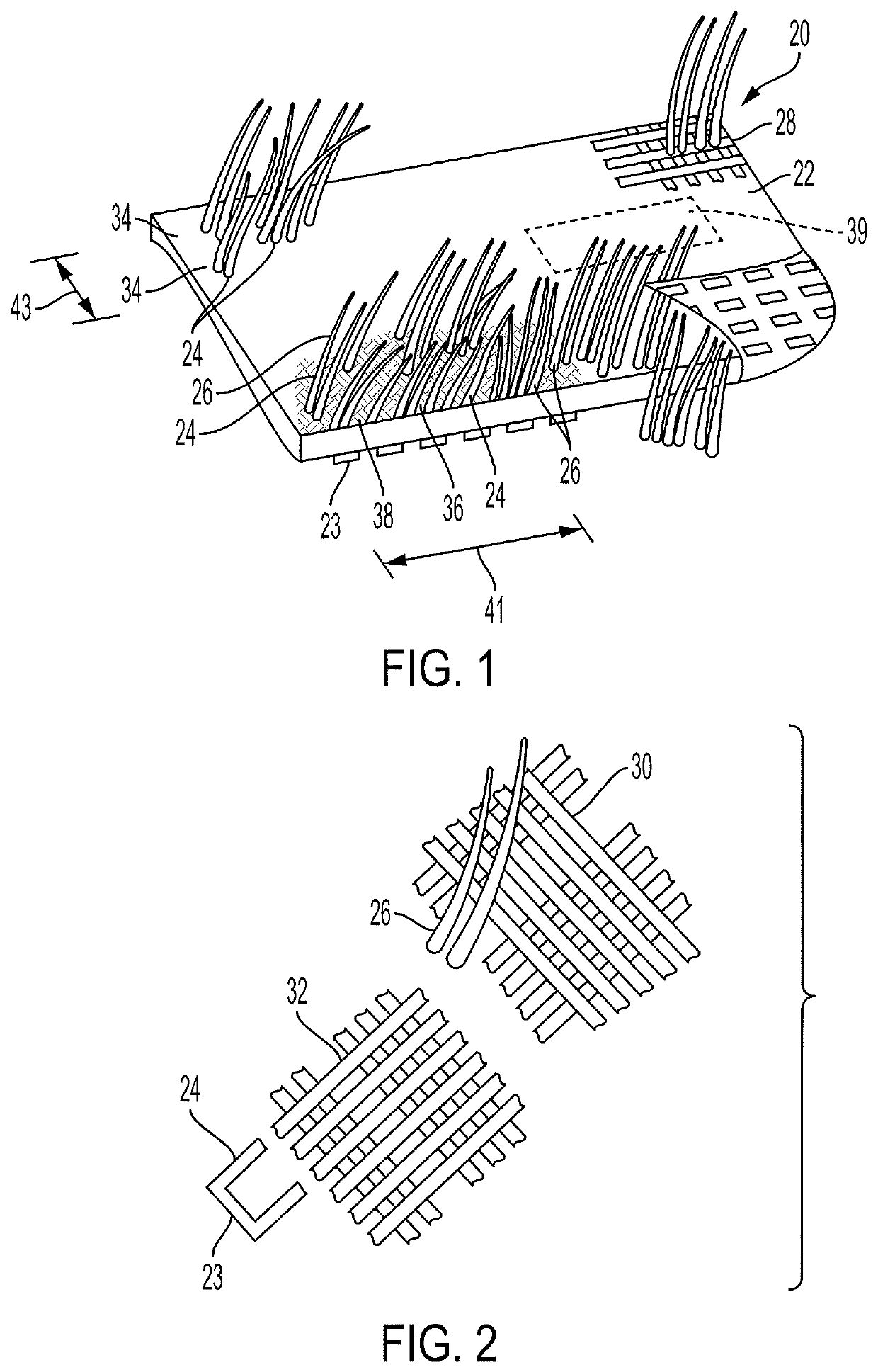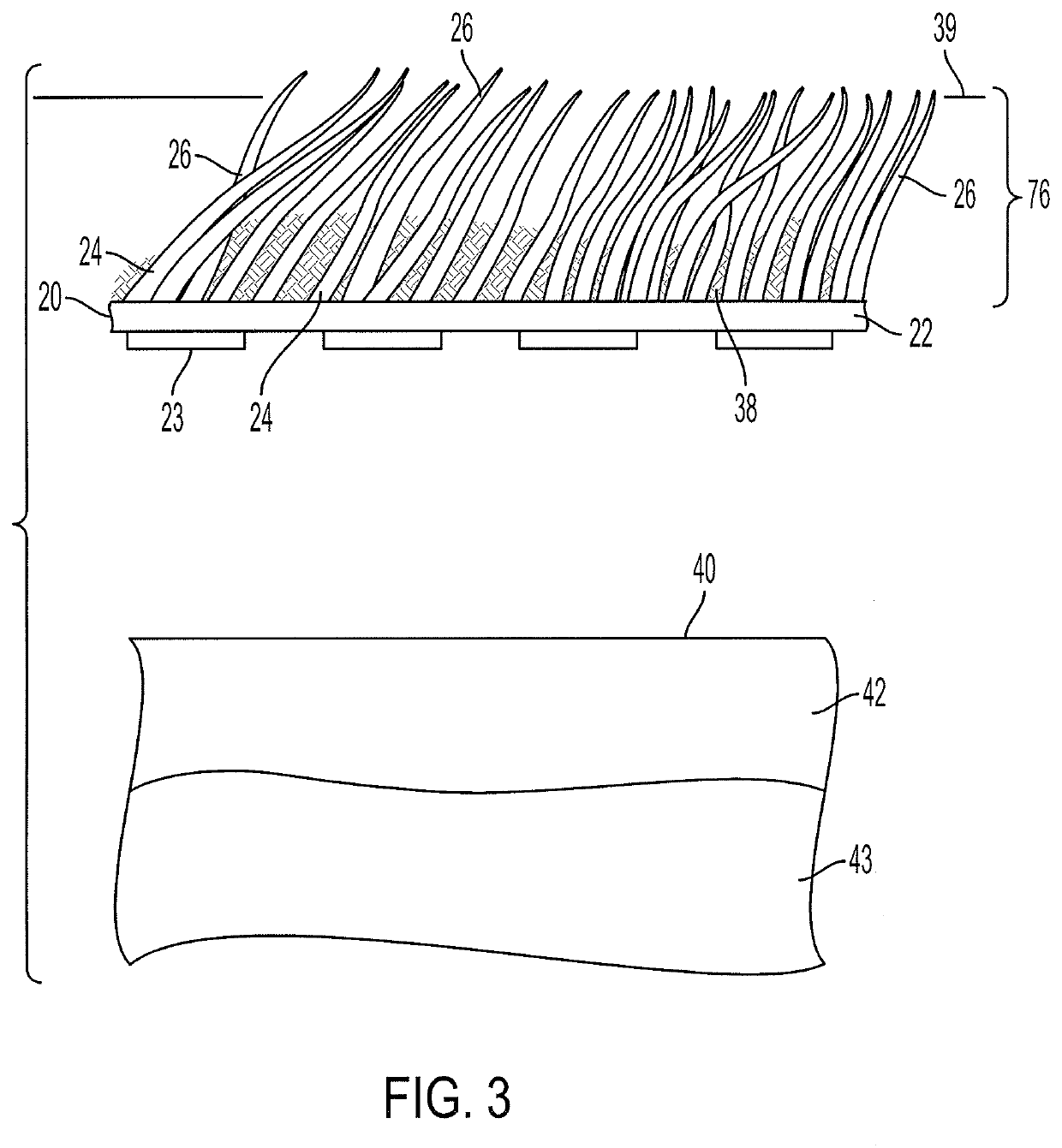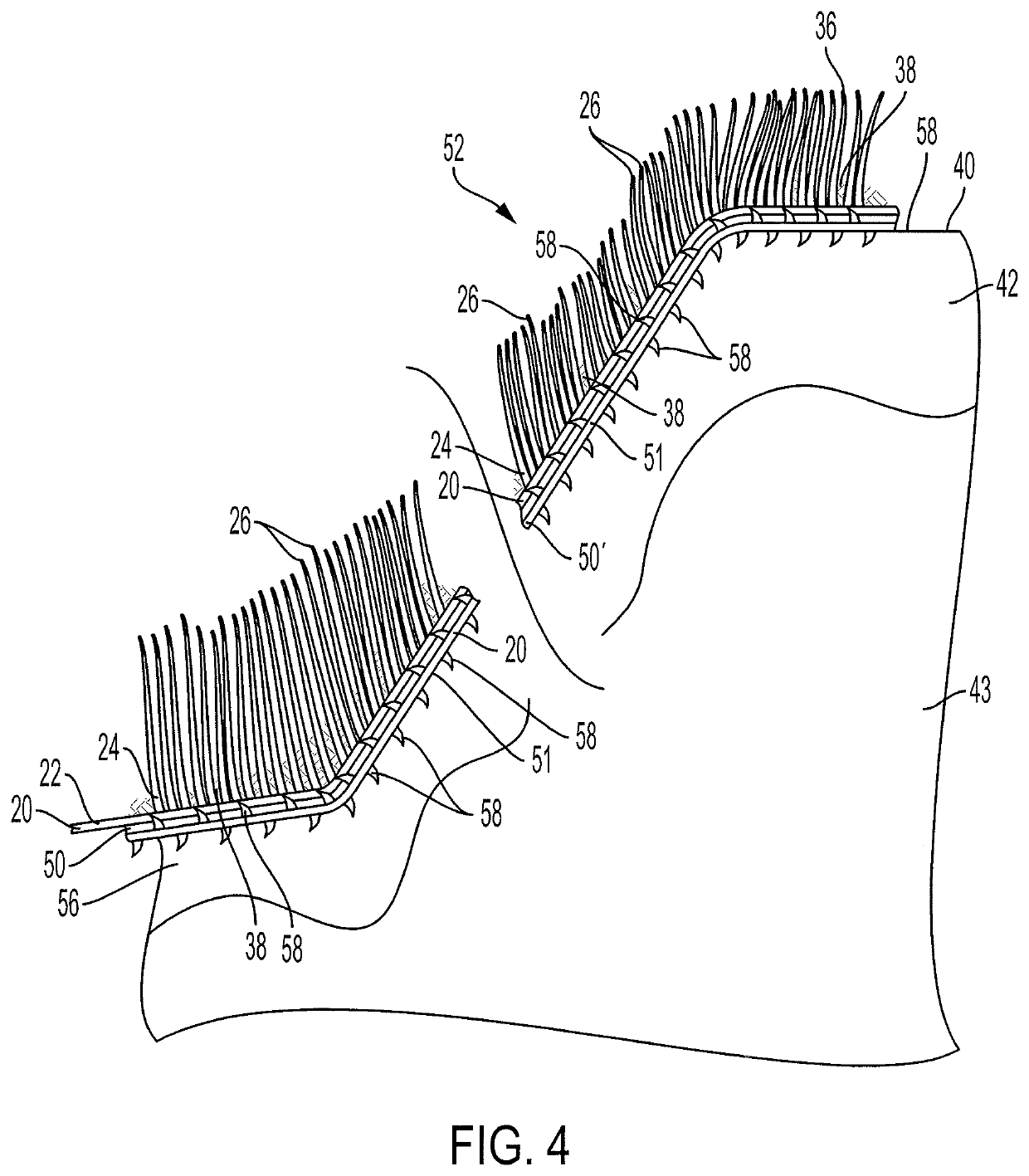Tufted Geotextile With Increased Shear Resistance To Hydraulic Infill Displacement And Dry-Flow Loading
a geotextile and displacement technology, applied in the field of geotextile sheets, can solve the problems of high shear force, large and rapid run-off, and the expected longevity of temporary coverings of ten or more years, and achieve the effects of reducing material costs, high shear resistance, and increasing density
- Summary
- Abstract
- Description
- Claims
- Application Information
AI Technical Summary
Benefits of technology
Problems solved by technology
Method used
Image
Examples
Embodiment Construction
[0048]With reference to the drawings, in which like parts have like identifiers, FIG. 1 illustrates in perspective view a tufted geotextile 20 in accordance with the present invention. The tufted geotextile 20 comprises a backing sheet 22 tufted with polymeric yarns that when tufted form bridges 23 on a back side of the backing sheet to form a plurality of tufts 24 that extend as grass-like blades 26 (for example, elongated thin narrow ribbon-like elements) from an upper surface of the backing sheet. In the illustrated embodiment, the backing sheet 22 is woven as shown generally at 28 in detailed view with warp and waft yarns, although a nonwoven sheet may be used. The backing sheet 22 has a weight basis or mass of between about 2 ounces per square yard to about 40 ounces per square yard.
[0049]The tufted geotextile 20 may comprise one or more backing sheets. In the embodiment illustrated in FIG. 2, the backing sheet 22 comprises a first backing sheet 30 and a second backing sheet 32...
PUM
 Login to View More
Login to View More Abstract
Description
Claims
Application Information
 Login to View More
Login to View More - R&D
- Intellectual Property
- Life Sciences
- Materials
- Tech Scout
- Unparalleled Data Quality
- Higher Quality Content
- 60% Fewer Hallucinations
Browse by: Latest US Patents, China's latest patents, Technical Efficacy Thesaurus, Application Domain, Technology Topic, Popular Technical Reports.
© 2025 PatSnap. All rights reserved.Legal|Privacy policy|Modern Slavery Act Transparency Statement|Sitemap|About US| Contact US: help@patsnap.com



